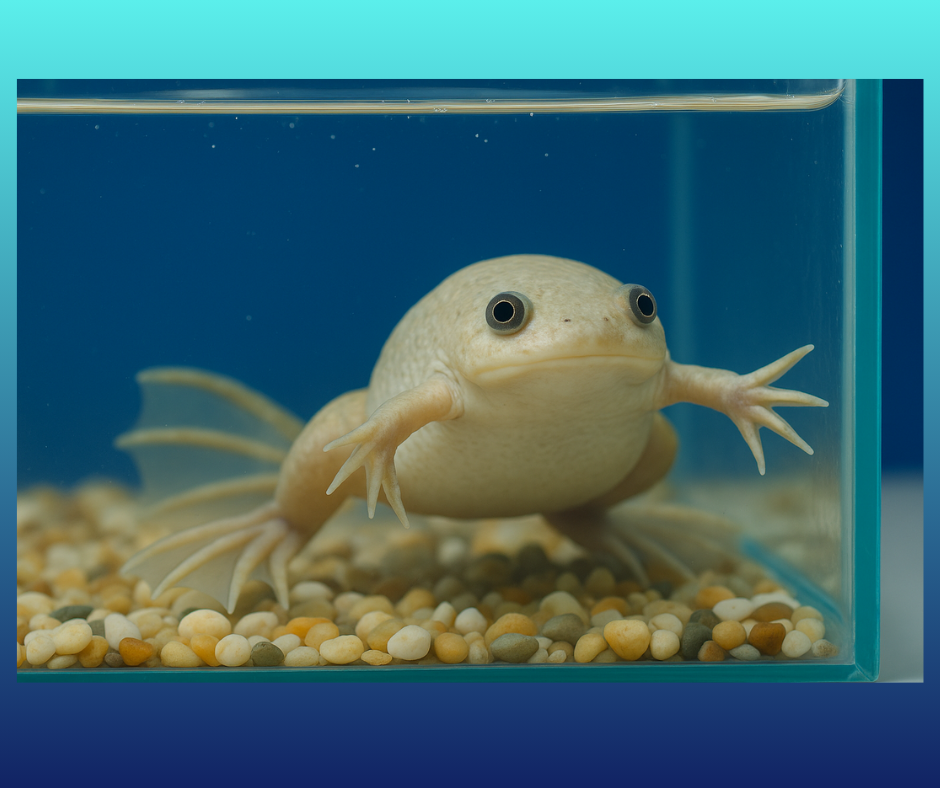Xenopus as a Sentinel Species: How Frogs Help Us Understand Environmental Change
When it comes to understanding the health of our environment, few organisms are as valuable as Xenopus, the African clawed frog. In 2025, researchers are increasingly turning to Xenopus to measure the effects of climate change, pollution, and emerging ecological threats. As a sentinel species, Xenopus acts like an early warning system, alerting us to changes in water quality, ecosystem balance, and even the spread of disease.
At Aquaneering, we’re proud to support this vital research by providing custom aquatic housing systems designed to give scientists the precision and reliability they need when studying environmental impacts.
Why Xenopus Is a Sentinel Species
Sentinel species are animals whose health reflects the state of their environment. Amphibians like Xenopus are especially valuable because of their permeable skin, aquatic life stages, and sensitivity to pollutants. Small shifts in water chemistry or temperature often show up first in amphibians, making them excellent indicators of ecological stress.
In addition, Xenopus offers unique advantages for laboratory studies:
Embryos and larvae develop externally, allowing scientists to observe the effects of environmental stressors in real time.
Fast development and clear life stages make it easy to track growth, reproduction, and survival under changing conditions.
Well-established genetic and molecular tools allow researchers to connect environmental exposures to biological pathways.
Together, these traits make Xenopus an indispensable tool for environmental sciences, bridging the gap between ecosystem monitoring and controlled laboratory research.
Ocean Acidification and Freshwater Quality
One of the greatest challenges facing aquatic ecosystems is changing water chemistry. As carbon dioxide levels rise, oceans and freshwater systems are becoming more acidic. At the same time, agricultural runoff, industrial pollution, and urbanization continue to alter nutrient balances and water quality.
Xenopus larvae provide a clear window into these changes. Their development can be carefully tracked under controlled pH and water chemistry conditions, making it possible to study:
How acidification affects early growth and survival.
Interactions between acidity and pollutants such as heavy metals or pesticides.
Long-term reproductive health in adults exposed to altered conditions.
By using Xenopus, researchers can simulate real-world scenarios in the laboratory and identify the thresholds where water quality changes begin to disrupt life. These insights directly inform policies to protect aquatic habitats and freshwater resources.
Microplastics and Emerging Pollutants
Another major focus in 2025 is microplastics research. Tiny plastic particles are now found in nearly every corner of the globe—from deep oceans to mountain lakes—and scientists are only beginning to understand their biological impact.
Xenopus is proving to be a critical model in this area. Studies are examining how microplastics influence:
Embryonic development, including growth rates and malformation risks.
Reproductive systems, where microplastics may disrupt hormones or gamete health.
Population-level survival, by testing long-term exposure effects across generations.
Because Xenopus shares many endocrine and developmental pathways with humans, these studies also shed light on potential risks to other species—including ourselves.
Climate Change and Disease Interactions
Rising global temperatures are not just changing water chemistry—they are also reshaping disease dynamics in aquatic systems. Amphibians worldwide face threats from fungal pathogens like Batrachochytrium dendrobatidis (Bd), as well as bacterial and viral infections that thrive in altered climates.
Xenopus studies are helping scientists forecast how climate change will affect disease risks by examining:
How temperature fluctuations impact amphibian immune responses.
How changes in water quality alter host–pathogen interactions.
How stress from pollutants and warming combine to weaken defenses against infections.
These findings guide conservation strategies and help us predict how entire ecosystems may shift under climate stress.
Aquaneering’s Role: Housing Systems Built for Environmental Science
Breakthrough research like this depends on precise and reliable aquatic housing. Subtle changes in temperature, water flow, or water chemistry can dramatically affect outcomes in environmental studies. That’s why Aquaneering’s Custom Aquatics Division designs systems tailored for Xenopus research.
Custom multi-tank racks optional flow-through feature makes separating treatment groups as easy as turning a handle.
Advanced filtration systems maintain clean, stable environments while allowing researchers to introduce specific stressors in controlled ways.
Temperature and photoperiod controls ensure reproducible conditions when testing climate and disease interactions.
Scalable solutions mean systems can be designed for small pilot studies or large, multi-rack facilities.
By working closely with researchers, Aquaneering ensures that housing systems don’t just keep animals healthy—they also create the stable experimental conditions needed to generate reliable, publishable data.

